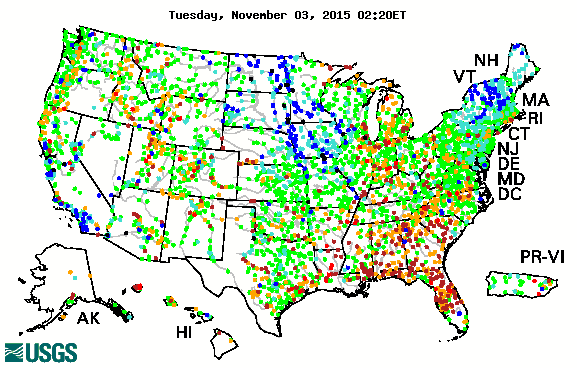
Water Resources of the United States
Water Resources Education Initiative - Water Poster Series |
|||
|
The Water Resources Education Initiative is an educational program developed by the U.S. Geological Survey in 1991. The Initiative is a partnership among several public and private organizations interested in water resources. The objective of the water-resources education program is to stimulate interest in and provide a basic knowledge of water resources for students in grades K-12. To meet this objective, the program provides several different teaching aids. The first is a series of water-resources education posters designed to attract the attention of the students. The second is a set of water-resources educational-training packages designed to be taught in the classroom or at after-school activities by water-resource professionals. The posters, depicted in a cartoon format, are available in full color or black and white JPEG files. The size of the completed posters is 3' x 2'. The reverse side of the color posters contains hands-on educational activities and is available in two different versions, one for children in grades K-5 and the other for children in grades 6-8. Several posters have been translated into Spanish. There are nine posters in the series. The nine posters address the topics of water use, wastewater treatment, wetlands, ground water, water quality, navigation, coastal hazards, watersheds, and hazardous waste. The titles of these posters are: "Water: The Resource That Gets Used & Used & Used for Everything!", "How Do We Treat Our Wastewater?", "Wetlands: Water, Wildlife, Plants, & People!", "Ground Water: The Hidden Resource!", "Water Quality: Potential Sources of Pollution", "Navigation: Traveling the Water Highway", "Ocean's Coastal Hazards: Hurricanes, Tsunamis, Coastal Erosion", "Watersheds: Where We Live", and "Hazardous Waste: Cleanup and Prevention." All nine posters in the series may be combined to create a large wall mural. Posters are excellent, supplemental curricula materials. They also are effective in attracting the attention of students, while providing educational information in graphic form. By providing background information and hands-on student activities on the back, the posters provide easy-to-use educational materials for instructors. Many classroom teachers use their posters as wall decorations for many years, thus providing exposure to many students now and in the future. The negatives for those posters, which are out of print, may be borrowed for duplicating. The duplicate negatives would then be used for commercial offset printing. The posters may be joined to create a wall mural. Please contact the USGS office in Madison, Wisconsin at (608) 238-9333, ext. 120 for further information. The actual duplication has to be done by a professional printing contractor, and it would cost several thousand dollars. The posters can be viewed at Web site: water.usgs.gov/public/outreach/OutReach.html.
|
|||
